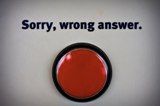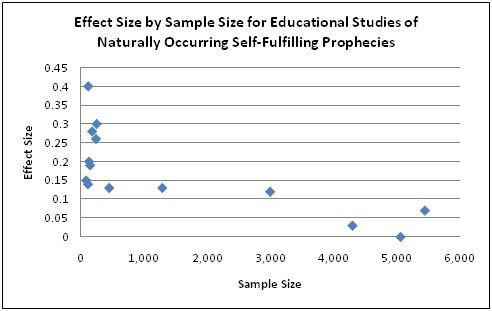Personality
Unicorns of Social Psychology
List of failures to replicate classic social psychology studies
Posted August 9, 2012

Bargh et al (1996)


Bargh et al (1996)
Main finding: Priming people with the elderly stereotype led them to walk more slowly down the hall.
Citation count: 2062. (Note: Citation counts are one indication of how influential an article is; most articles get a few dozen citations; articles cited hundreds of times, or more, are usually classics in a field).
Importance: Priming of behavior, embodied cognition, stereotypes. Helped boost the modern wave of emphasis on the power of automatic and unconscious processes.
Published failures to replicate: Cesario et al (2006); Doyen et al (2012); Hull et al (2002).
Notes: Bargh has claimed Ceasario and Hull et al did replicate the finding (see Bargh's Blog post titled Priming Effects Relicate Just Fine, Thanks). However, neither produced statistically significant main effects of elderly primes on walking speed (p's ranging from .06 to .13). All three papers, however, did report some conditions under which the priming effect seems to have "worked."
Unpublished Reports of or References to Failures to Replicate
Lemm, K. (2012). Lieberman, M. (2012). Pashler et al. (2008).

Darley & Gross (1983)


Darley & Gross (1983)
Main finding: Social class stereotypes biased judgments concerning the motivation and performance of a student in the presence of individuating information, but not in its absence.
Citation count: 786.
Importance: Interpreted as showing that stereotypes act as hypotheses that lead to their own confirmation; seems consistent with a conclusion that stereotypes pervasively bias judgments.
Published Failures to Replicate and Studies Finding Opposite Patterns
Baron et al (1995). Two exact attempts to replicate. Found the exact opposite pattern: Social class stereotypes biased judgments in the absence of individuating information but not in its presence. Citation count: 29.
Locksley et al (1980, 1982). Studies of sex stereotypes and stereotypes of day/night people. Showed that stereotypes biased judgments with useless individuating information but did not bias judgments in the presence of relevant individuating information.
Krueger & Rothbart (1988). Studies of sex stereotypes showed that the less individuating information people had, the more they relied on stereotypes.
Note: Darley & Gross (1983) has been cited over 600 times since 1996, i.e., after the two exact failures by Baron et al, had been published.
Snyder, Tanke, & Berscheid (1977)
Main finding: Physical attractiveness stereotypes created a self-fulfilling prophecy whereby people were friendlier to those they believed were more attractive, and this evoked friendlier behavior from those believed to be attractive (thereby "fulfilling" the stereotype that attractive are warmer, friendlier and just plain better people).
Citation count: 949.
Importance: One of the most influential social psychological studies of the 1970s, producing results that fit nicely with some of the main theoretical and political narratives in social psychology (emphasizing the pervasive power of stereotypes to bias judgments and create reality and injustice).
Published Failure to Replicate
Anderson & Bem (1981). I know of no other attempts at exact replication.
Snyder & Swann (1978)



Main finding: People seek information about others in ways that are heavily biased towards confirming their own expectations.
Citation count: 712
Importance: Results augmented theoretical narratives in social psychology emphasizing people's supposedly irrational, suboptimal, and error-prone natures.
Published Failures to Replicate
I know of no published exact failures to replicate. That is because researchers quickly realized there was something off kilter about the original study's methods. Snyder&Swann required participants to choose from hypothesis-confirming or hypothesis-disconfirming leading questions (e.g.. "What would you do to liven up a dull party?").
In the real world, people are not required to seek social information with leading questions. Subsequent research, therefore, either gave the people the option of choosing from leading or non-leading questions (e.g., "If you were at a dull party, would you try to liven it up?"), or allowed people to make up their own questions. This research consistently found that, overwhelmingly, people asked diagnostic,unbiased questions. Snyder & Swann's conclusion was disconfirmed in contexts other than the artificial one that they studied. See: Devine et al (1990), Skov & Sherman (1986), Trope & Bassock (1982), Trope et al (1984).
Interesting note: When added together, these papers have been cited less than Snyder&Swann (1978).

GREY AREAS


GREY AREAS
Word, Zanna, & Cooper (1974)
Main finding: Racial stereotypes lead to their own fulfillment.
Citation count: 688
Importance: Another influential pair of social psychological studies of the 1970s, producing results that fit nicely with some of the main theoretical and political narratives in social psychology (emphasizing the pervasive power of stereotypes to create injustice).
Failed replications: None.
Replications: None. I have been able to identify zero replications in the nearly 40 years since the study was published. It is a good study, but it seems important to find out if the results hold up.
Rosenthal & Jacobson, (1968)
Main finding: Teachers' expectations are self-fulfilling (they cause students' achievement).
Citation count: 4742
Importance: The first study to empirically demonstrate that interpersonal expectations can be self-fulfilling. Launched a major area of research. Seemed to explain inequalities of race, class, gender.
Published Failures to Replicate
There are many. Nonetheless, self-fulfilling prophecy effects do occur. They just do not occur very often or very powerfully. Rosenthal himself (Rosenthal & Rubin, 1978) found that almost 2/3 of experiments produce no statistically significant evidence of self-fulfilling prophecy.
Naturalistic studies focus on what happens in the real world, rather than under highly controlled and sometimes artificial experimental conditions. My book (Jussim, 2012) includes a table describing the effects obtained in every naturalistic study of teacher expectations and self-fulfilling prophecies that I could find. Those results were shocking, as can be easily seen in this chart:

Larger samples produce self-fulfilling prophecy effects that hover barely above 0. Small samples produce larger effects. Smaller samples, however, cannot "cause" larger effects. What we have here is dysfunctional methods and review processes. Small studies should be suspect, but, when they produce "significant" effects (which must be larger to reach significance in small compared to large studies), they have a good shot at being published. This pattern, therefore, reflects the dysfunction of focusing on "successful" studies. The effect size in the real world is much smaller than it seems (as indicated by the large studies), because of publication bias in favor of "successful" studies and against publishing null results. Let the failed replications be published!
If you, dear reader, know of any comparable failures to replicate influential classic studies in psychology (or of replications to the studies listed here), please contact me—I'd love to find out more about them.
References
Bargh, J.A. (2012). Priming Effects Replicate Just Fine, Thanks. Retrieved on 8-8-12 from: http://www.psychologytoday.com/blog/the-natural-unconscious/201205/prim….
Bargh, J.A., Chen, M., & Burrows, L. (1996). Automaticity of social behavior: Direct effects of trait construct and stereotype activation on action. Journal of Personality and Social Psychology, 71, 230-244.
Baron, R. M., Albright, L., & Malloy, T. E. (1995). The effects of behavioral and social class information on social judgment. Personality and Social Psychology Bulletin, 21, 308-315.
Darley, J. M., & Gross, P. H. (1983). A hypothesis-confirming bias in labeling effects. Journal of Personality and Social Psychology, 44, 20-33.
Devine, P. G., Hirt, E. R., & Gehrke, E. M. (1990). Diagnostic and confirmation strategies in trait hypothesis testing. Journal of Personality and Social Psychology, 58, 952-963.
Doyen, S., Klein, O., Pichon, C., Cleeremans, A. (2012). Behavioral priming: It's all in the mind, but whose mind? PLoS One, 7(1): e29081. doi:10.1371/journal.pone.0029081, retrievable at: http://www.plosone.org/article/info%3Adoi%2F10.1371%2Fjournal.pone.0029…
Jussim, L. (2012). Social perception and social reality: Why accuracy dominates bias and self-fulfilling prophecy. NY: Oxford University Press. (Abstracts, first chapter, and excerpts available at: http://www.rci.rutgers.edu/~jussim/).
Krueger, J., & Rothbart, M. (1988). Use of categorical and individuating information in making inferences about personality. Journal of Personality and Social Psychology, 55, 187-195.
Lemm, K. (2012). Discussion posting available at: https://groups.google.com/forum/#!topic/openscienceframework/2XhZ6s9otQg (retrieved 8-8-12).
Lieberman, M. (2012). Does thinking of Grandpa make you slow? Available at:http://www.psychologytoday.com/blog/social-brain-social-mind/201203/doe… (retrieved 8-8-12).
Locksley, A., Borgida, E., Brekke, N., & Hepburn, C. (1980). Sex stereotypes and social judgment. Journal of Personality and Social Psychology, 39, 821-831.
Locksley, A., Hepburn, C., & Ortiz, V. (1982). Social stereotypes and judgments of individuals: An instance of the base-rate fallacy. Journal of Experimental Social Psychology, 18, 23-42.
Pashler et al. (2008). Available at: http://psychfiledrawer.org/chart.php?target_article=1&type=failure(retr… 8-8-12).
Rosenthal, R., & Jacobson, L. (1968). Pygmalion in the classroom: Teacher expectations and student intellectual development. New York: Holt, Rinehart, and Winston.
Rosenthal R., & Rubin, D. B. (1978). Interpersonal expectancy effects: The first 345 studies. The Behavioral and Brain Sciences, 3, 377 386.
Skov, R. B., & Sherman, S. J. (1986). Information gathering processes: Diagnosticity, hypothesis confirmatory strategies, and perceived hypothesis confirmation. Journal of Experimental Social Psychology, 22, 93 121.
Snyder, M., & Swann, W. B. Jr. (1978). Hypothesis-testing processes in social interaction. Journal of Personality and Social Psychology, 36, 1202-1212.
Snyder, M., Tanke, E. D., & Berscheid, E. (1977). Social perception and interpersonal behavior: On the self fulfilling nature of social stereotypes. Journal of Personality and Social Psychology, 35, 656 666.
Trope, Y., & Bassok, M. (1982). Confirmatory and diagnosing strategies in social information gathering. Journal of Personality and Social Psychology, 43, 22-34.
Trope, Y., Bassok, M., & Alon, E. (1984). The questions lay interviewers ask. Journal of Personality, 52, 90-106.
Word, C. O., Zanna, M. P., & Cooper, J. (1974). The nonverbal mediation of self-fulfilling prophecies in interracial interaction. Journal of Experimental Social Psychology, 10, 109-120.




